Rethinking Dairy: Farming with Nature
With animal welfare, soil health, and sustainability at its core, The Ethical Dairy offers a different path for the future of farming.
The Ethical Dairy, located at Rainton Farm in southwest Scotland, is the first commercial dairy farm in the UK to adopt a cow-with-calf system. With this method, both male and female calves remain with their mothers to suckle for up to six months. The approach stands in contrast to conventional dairy farming, where calves are typically separated from their mothers within hours of birth. Committed to organic principles, animal welfare and environmental stewardship, the farm produces traditional cheeses using milk from its herd. By treating animals, land, and people with care and respect, The Ethical Dairy is showing that dairy farming can be both sustainable and viable.
REVOLVE spoke with Charles Ellett, Dairy Manager at the farm, about his journey, the challenges that his team faced, and the deep rewards of farming differently.
How did you start out as a dairy farmer?
It happened by accident, to be honest; a bit of fate was involved. I originally came to the farm to look after the nature areas and engage with visitors after completing a degree in countryside management. That job was seasonal, so during the winter I asked if there was anything else I could do. I was encouraged to help out on the farm and really enjoyed it. I started driving tractors and doing silage work, then gradually became more involved in day-to-day operations. Eventually, when a position opened up, I put my hand up. David, the farm owner, offered me a six-month trial, which has ended up lasting nearly eight years.
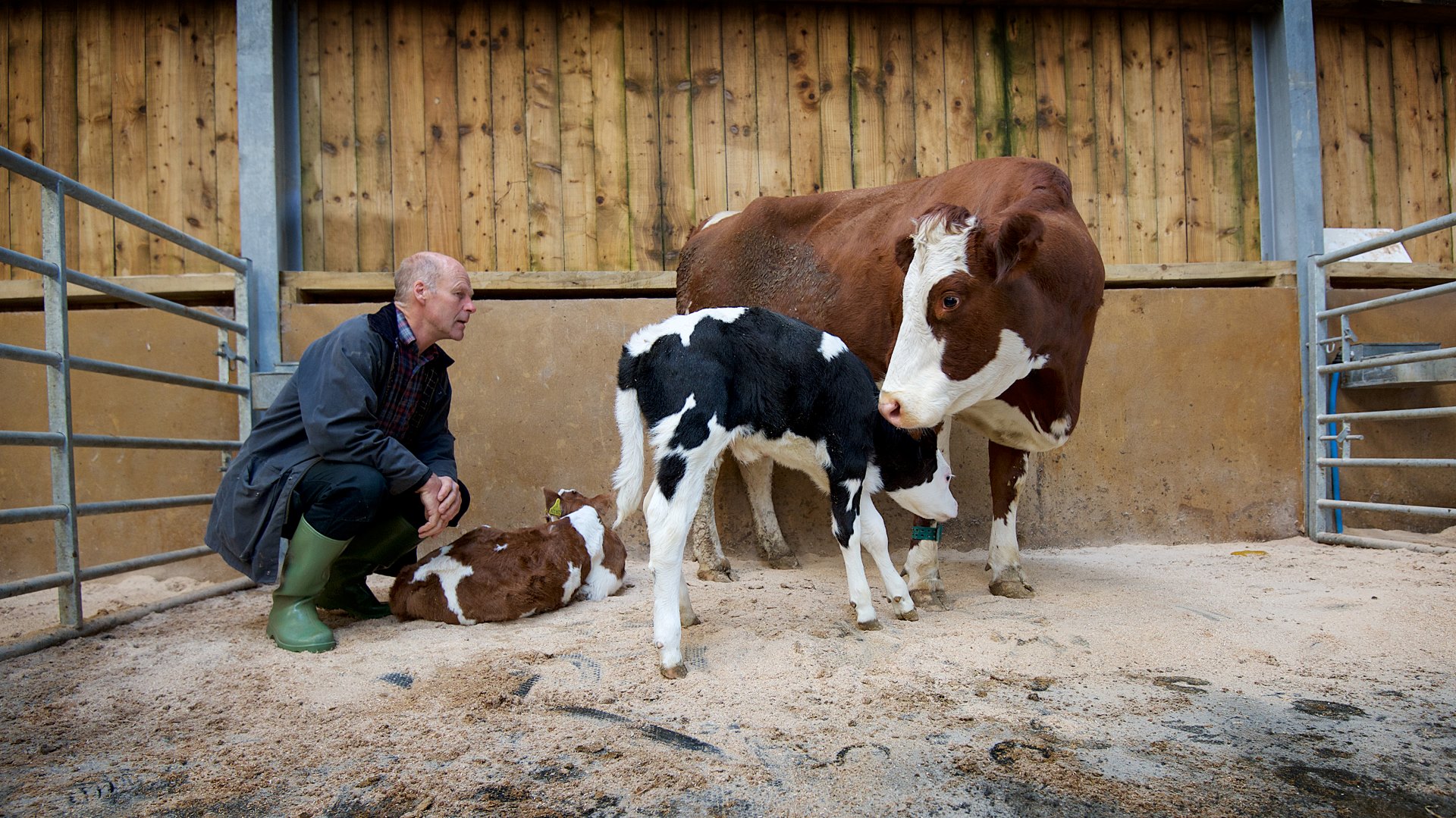
I always had an interest in the dairy side of the farm. Although it wasn’t big enough at the time to support two full-time dairy workers, I knew that was where I wanted to focus. I left in 2013 to work on a much larger dairy farm with 1,500 cows, knowing I’d gain valuable experience. Four years later, I had the chance to return and take over management of the dairy here, and it felt like coming home.
What first made you question conventional dairy farming methods and think about doing things differently?
My experience at the larger dairy farm was big culture shock for me, coming from an organic farm with a hundred cows, going to one with more than ten times that amount. The cows were milked three times a day and pushed to their limits. They never got to go outside, and neither could I. Many cows suffered from foot problems due to standing on concrete all the time. I became a certified foot trimmer and was treating around 100 cows a week. Everything was designed for maximum output, routines were built for efficiency rather than welfare, and it became clear that the animals were paying the price. They were exhausted, and so was I. I was working incredibly long hours, barely seeing my family, and ultimately hit a wall. The pressure was relentless, and when my health started to suffer, I knew I couldn’t continue. The job became less about caring for animals and more about managing a production line. I started to feel like I was working in a factory, not a farm, and I didn’t want any part of it.
The cows were milked three times a day and pushed to their limits. They never got to go outside, and neither could I.
Later on, back at The Ethical Dairy, it was the questions of our visitors. We always welcomed visitors at the farm, and we would take families to see the cows and calves. Many parents, especially mothers, would ask, “Why do you take the calves away from their mum?” At first, we gave the standard answer about maximising milk and managing the herd, but the more we said it, the more we questioned it ourselves.
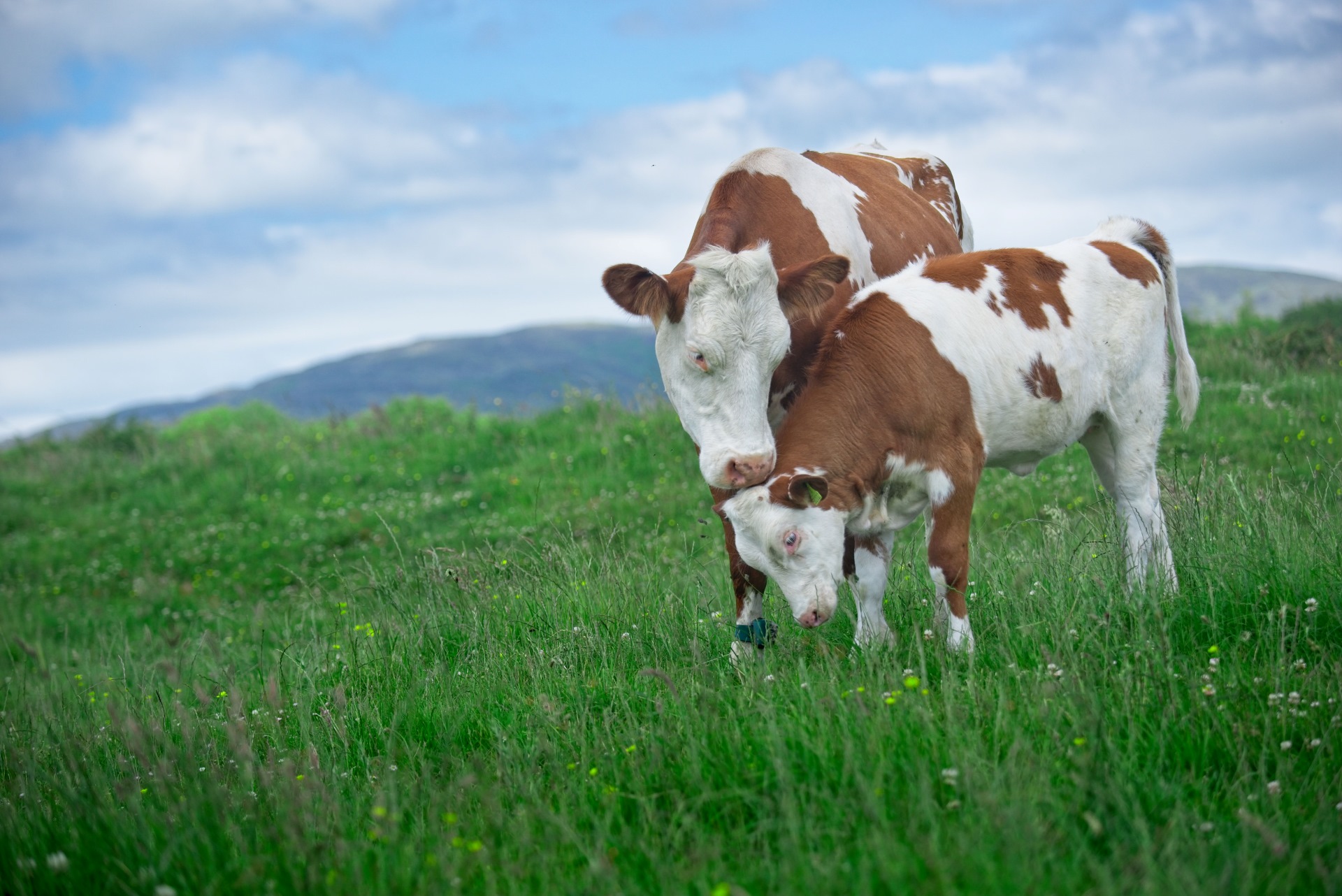
That curiosity, combined with my academic studies in organic farming, pushed us to look into cow-with-calf systems being trialled elsewhere, such as the south of England and the Netherlands. It sparked a genuine interest in changing how we farm, and we decided to jump in with both feet and go for it!
We trialled the whole cow with calf system for the first time in 2012. It taught us a lot, but financially, it was disastrous. In 2016, we redesigned our system and tried again. It wasn’t easy at first, but now we can say that this system works. It works for both us and the cows, whose behaviour shows reduced stress, improvement in health, and much higher milk production than we expected.
Along the way of converting the farm into a more ethical model, how did your family, colleagues, and the wider farming community react to your shift in approach?
We’ve always been seen a bit as the outsiders, even before introducing cow-with-calf. Being organic already set us apart in the eyes of the local farming community. So, when we started talking about keeping calves with their mothers, they thought we had completely lost our minds.
Even some of our own team struggled with the concept at first. One dairyman who had worked in conventional systems all his life couldn’t understand why we would try to change things. But because I came into farming without any inherited mindset, I was open to the idea of doing things differently.
When we started talking about keeping calves with their mothers, they thought we had completely lost our minds.
Fortunately, my wife and many of the women on the farm were enthusiastic about giving it a go. There was definitely a sense that it could help us stand out in the market, but we quickly realised that the benefits went far beyond branding. We can confidently say that the cows are happy – they’re calmer, healthier and more productive.
Our cheese production has helped connect our farming practices with the public. The farm had made cheese decades ago, and we brought it back as part of our ethical model. We adapted old barns, invested in facilities, and now produce around 20 tonnes of cheese a year. It supports our story, adds value to the milk, and helps sustain our cow-with-calf system.
What does a typical working day at The Ethical Dairy look like for you?
I’m usually up around 5 and down at the farm by 5:30 to start milking at 6. That takes us through to about 9 or 9:30 once everything’s cleaned and wrapped up. After that, I’ll check on the cows, do any necessary foot trimming, and take care of feeding and bedding when they’re housed. Mornings are busy, but I’m often done by around 10:30.
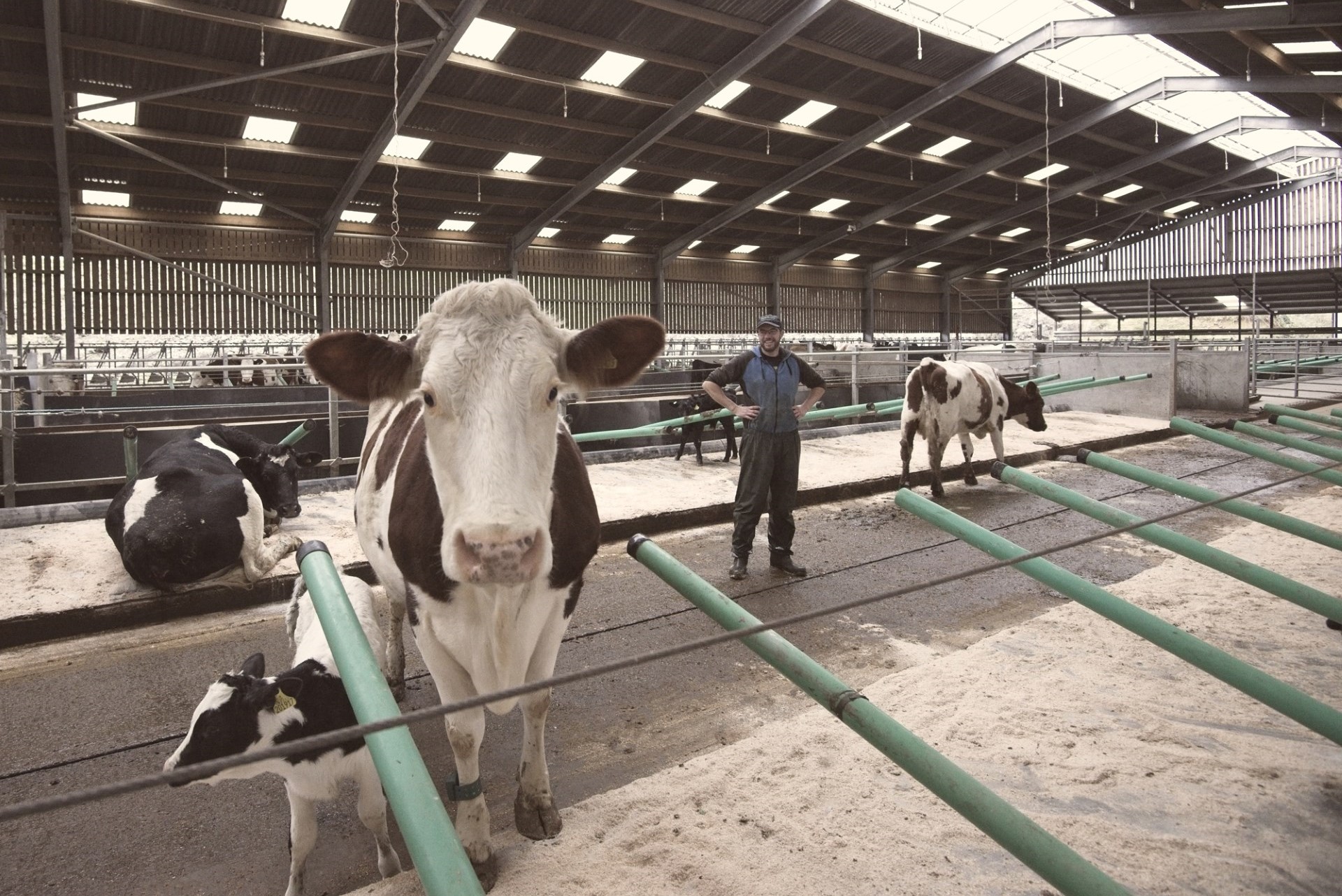
The afternoons vary. I might jump on a tractor to cut grass or handle other fieldwork. David encourages us to take breaks when we can, so if I need a bit of time off, I’ll go for a ride on my motorbike or spend time with the family. Afternoon milking starts at 4 and I’m usually home by 6:30.
During calving season, things are more intense. We use CCTV in the sheds, which lets me keep an eye on things from home, and I can get down to the barn quickly since it’s just 300 yards away. We also work on a 10 days on, 4 days off rotation, which gives us proper recovery time and lots of time to be with the family.
Our team includes myself and George full-time, with Tom covering milking when I’m off. We also have vet students throughout the year who help with day-to-day tasks. The system is designed so that one person can manage it if needed, but it runs much more smoothly with two.
Has keeping the calves with their mothers changed the behaviour and health of the cows?
Absolutely. The cows are far calmer and more content with each other. When we used to take calves away at birth, reintroducing the cows to the herd caused chaos — lots of pushing and re-establishing pecking orders. Now, when a cow rejoins the group with her calf by her side, there’s much less friction. The presence of the calf seems to diffuse tension.
The herd is also more sociable, both with each other and with us. They’re used to being around people, and they trust us. That calmness passes down to the calves too, who grow up unafraid of humans. In fact, the cows love making contact and they’re just like dogs, often following us around looking for a scratch behind the ears.
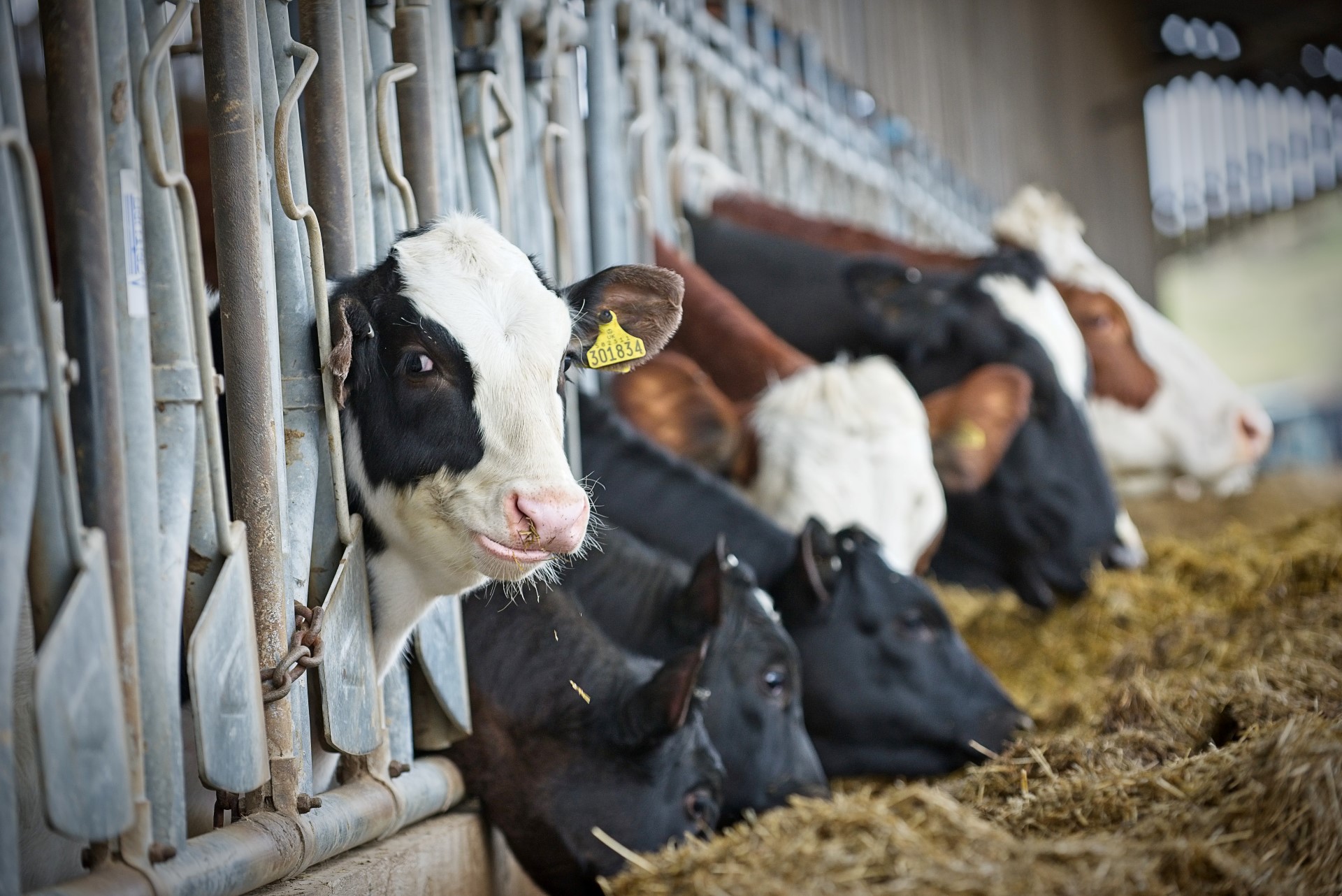
Health-wise, the improvements have been remarkable. In the last 12 months, I’ve only had five cases of mastitis in a herd of 120 cows, and none of them required antibiotics. We’ve eliminated cereals from the diet which has helped with digestive issues. The cows enjoy eating willow, ivy and dandelions growing on the pasture, all of which have anti-inflammatory and natural medicinal properties. The result is a much more resilient herd. The cows are living longer, with some in their ninth lactation.
When and how do you wean the calves, and what happens after that phase?
We don’t start the weaning process until calves are at least six weeks old. From that point, we begin only separating them at night, which gradually encourages independence and gets them used to eating grass, silage, and a little bit of parlour feed. We continue this nighttime separation until they’re around five and a half to six months old. Throughout this time we milk mum once a day.
By then, the calves are usually around 250 kg. At that point, we introduce a weaning tab — a small plastic device that fits in the calf’s nose and stops it from suckling but still allows it to stay with its mother. This allows for continued grooming and social bonding without milk transfer.
The cows love making contact and they’re just like dogs, often following us around looking for a scratch behind the ears.
We maintain the night separation routine and begin milking the cows twice a day instead of once. Over the course of about 10 days, we increase the distance between the cows and calves, eventually moving them to adjacent fields separated by a simple fence. They can still see and touch each other, which eases the emotional transition.
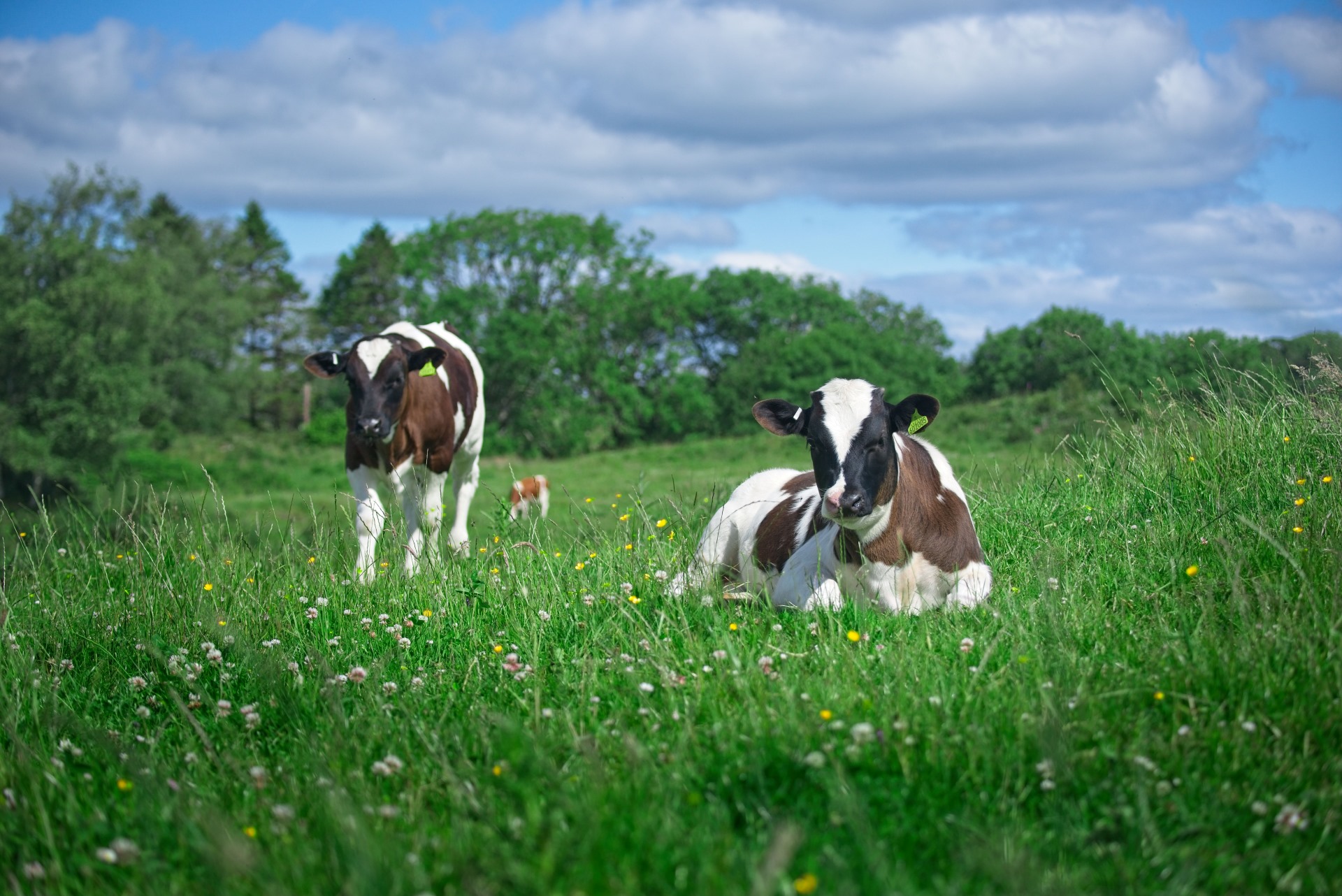
We also supplement the calves with magnesium, selenium, and copper at this stage because our soil is naturally low in those minerals. That little boost helps them through the shift from milk to solids. It’s a slow and gentle process, and while there is some calling, it’s nothing compared to the stress caused by sudden weaning.
How do you manage the balance between allowing calves to suckle while still producing enough milk to run a financially sustainable business?
At first, we thought the loss of milk would be a huge challenge. But by increasing the herd size by a third and managing calf access through night separation, we’ve found a balance. The calves take about 2,000 litres each, but we still get 4,000 litres from each cow for processing.
The calves also grow significantly faster, sometimes two to three times as fast as bucket-reared calves, which means we can sell them earlier or integrate them into our system more quickly. That improves cash flow and reduces the pressure on forage resources.
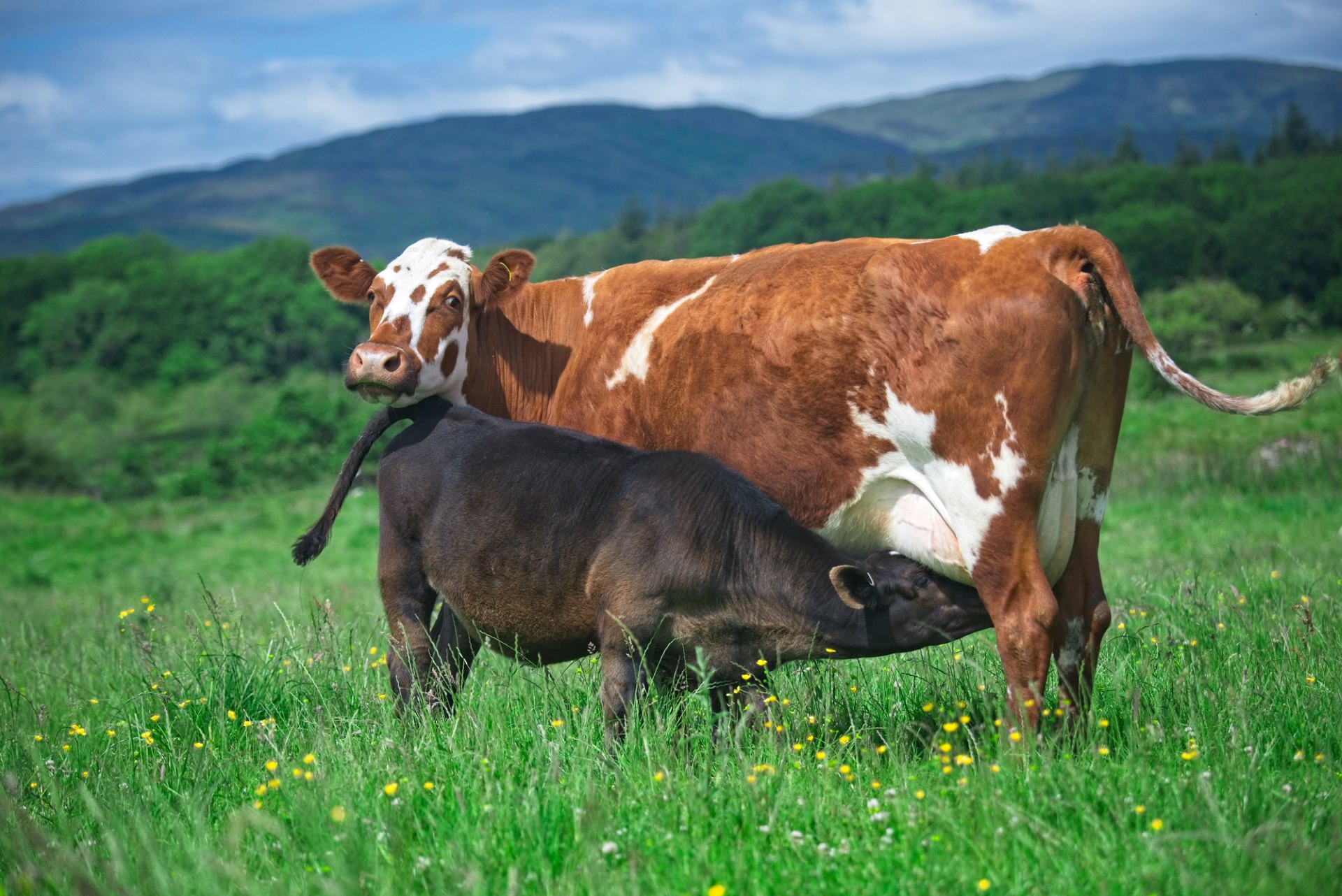
We’ve turned what used to be seen as lost milk into a longer-term investment. Healthier, stronger calves mean better-performing cows in the future. It’s a system that pays back over time.
So yes, we produce less milk for sale per cow, but we gain in other areas — reduced vet costs, improved animal health, faster-growing calves, and long-term herd resilience. It adds up.
The Ethical Dairy has significantly reduced greenhouse gas emissions and operates almost as a closed-loop system. Beyond calf-with-cow rearing, what key changes helped you achieve this?
One of the biggest changes was the installation of a biodigester, which processes all the farm’s slurry along with waste from the cheese dairy. The resulting digestate is rich in nutrients and is applied to the fields while crops are growing, improving uptake and reducing runoff into the environment. We’re not running heavy machinery over the land, which helps protect the soil structure. Contractors handle the big jobs like silage and digestate spreading, so we’ve massively reduced our diesel usage and machinery hours.
Over the past 25 years, we’ve seen a steady increase in soil health and the return of wildlife.
Since 2016, we haven’t had to apply lime to correct soil acidity because the ecosystem is now self-regulating. The soil maintains its own balance, thanks to healthy microbial activity and nutrient exchanges between plants and microbes. Although our use of manufactured fertilisers has dropped significantly, the levels of available nitrogen, phosphorus and potassium in the soil have actually increased.
Our net-zero status has been independently audited and verified. The farm now recycles methane emissions through the biodigester, which heats water for the dairy instead of releasing those gases into the atmosphere. All of these steps, taken together, have helped us build a regenerative, low-impact farming system that genuinely works for the environment.
What have been the key impacts on biodiversity and soil health at the farm?
The biodiversity gains have been extraordinary. When I first arrived, the farm was already a few years into its organic transition, and you could already see signs of regeneration. Over the past 25 years, we’ve seen a steady increase in soil health and the return of wildlife.
We’ve created dedicated areas for nature and moved away from artificial inputs like fertilisers, wormers, and drastically reduced antibiotics. As a result, beneficial insects like dung beetles have come back. We don’t plough the land, do minimal tillage, and use a mixed grazing approach with our cows and around 300 sheep. The sheep help manage pasture growth, repair soil structure and naturally reduce parasites by digesting worm eggs. We let the cows forage on plants like willow and ivy, which have natural medicinal properties. These low-intervention methods have improved soil structure, boosted microbial life, and strengthened the health of both the land and the herd.
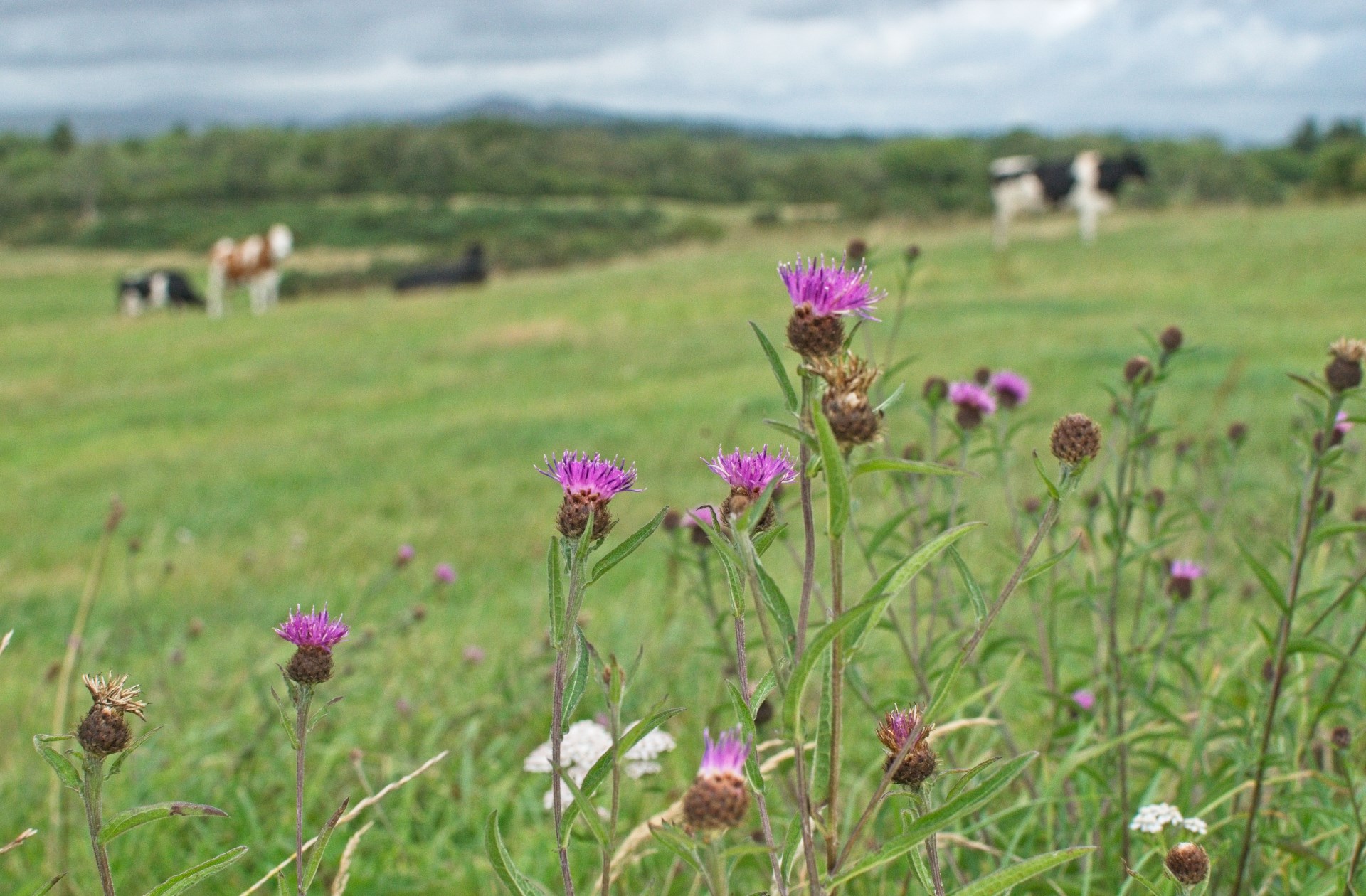
The visual signs are everywhere. Each May, the whole farm turns yellow with dandelions — a great early food source for pollinators and a natural tonic for cows. We’ve also seen shifts in wildlife populations. Badgers have pushed out the rabbits, returning 25 acres of grazing land. Hares, wild deer, peregrine falcons, golden eagles, red kites, and buzzards are now regular sightings. We used to shoot rooks, but now they help manage leatherjackets that used to damage our fields.
We’ve learned that when we step back and allow nature to do its thing, it often solves problems more effectively than we ever could.
What advice would you give to farmers who are interested but unsure about making the change?
The best thing you can do is visit a farm that’s already doing it. Seeing the system in action is far more convincing than any theory. It’s helpful to speak directly with people who have worked through these challenges.
Be prepared for a learning curve. When we first trialled cow-with-calf in 2012, it didn’t go well. Cows were confused, stressed, and their milk yields dropped. The key mistake we made was trying to change too much too quickly. Routine is everything. Build a new routine slowly and consistently.
Don’t try to do it alone. You need your whole team on board. Everyone needs to understand the vision and believe in the approach. If they don’t, it will fail. One researcher sent her reluctant team to visit us, and they returned full of ideas and enthusiasm. Now they’ve made it work.
And finally, don’t make it too complicated, don’t overthink. Keep it simple.